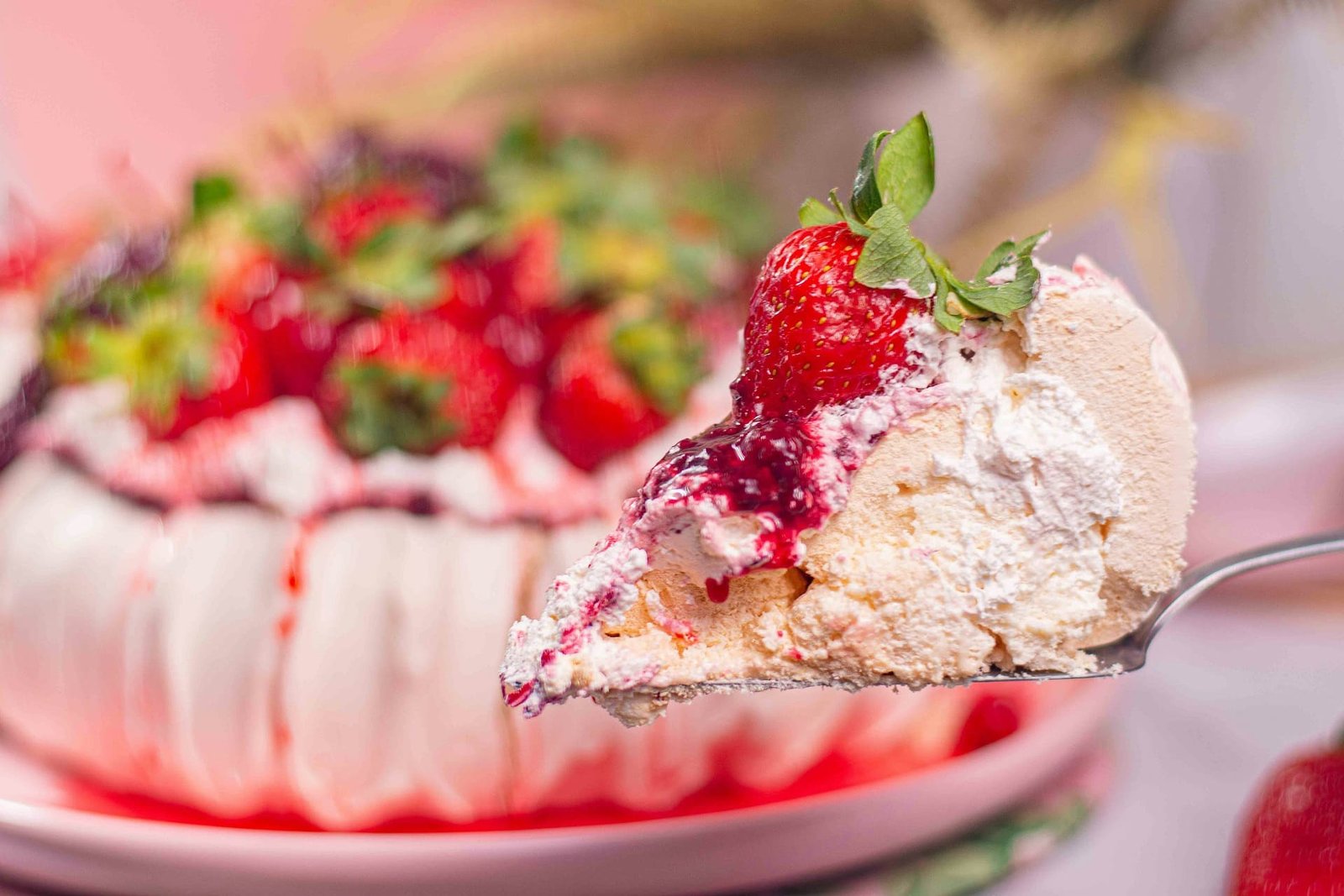Ah, the Pavlova. A cloud of sweetness, a delicate balance of crisp and chewy, a dessert so ethereal it seems to defy gravity. There’s something inherently theatrical about a Pavlova. It’s not just a dessert; it’s a performance. From the cloud-like meringue to the swirl of whipped cream and the vibrant pop of fresh fruit, it’s a masterpiece that always seems to steal the spotlight at the dinner table. But as with all great stars, the Pavlova is no stranger to drama—and occasionally, a bit of chaos.
The Queen of Desserts

Named after the legendary Russian ballerina Anna Pavlova, this dessert is said to have been created to mimic the lightness and grace of her dancing. But its origins are as contentious as its delicate nature. While New Zealand and Australia have long debated who first created it, a surprising twist reveals that the dessert’s roots may actually trace back as far back as 13th century Syria.
This sort of cooking with meringues and sugar syrup probably passed into Europe via Portuguese-controlled territories in Africa (formerly Arab-held), or through the Moorish occupation of Spain, Sicily and France. From there, it evolved in the Habsburg and Roman Empires in Central Europe, before the housewives of America’s Midwest honed it in the late 19th Century by adding things like cornflour to stabilize it. In short, meringue-based cakes with whipped cream and fruit existed well before Pavlova’s tour of the Antipodes.
The Art of the Meringue
Creating a Pavlova is a bit like a ballet performance: it requires precision, timing, and a touch of artistry. The meringue base is the star of the show, and achieving the perfect balance of crisp outer shell and marshmallowy interior is key. It’s all about whipping egg whites to stiff peaks, incorporating sugar with a gentle hand, and baking at a low temperature until the meringue is dry and crisp on the outside but still soft within.
The Balancing Act
Once you’ve mastered the meringue, it’s time for the grand finale: topping it with a dollop of whipped cream and a cascade of fresh fruit. This is where the Pavlova truly shines, as the sweetness of the meringue and cream perfectly complements the tartness of the fruit. It’s a balancing act of flavors and textures that delights the senses.
Oops, It Dropped!
If creating it is an elegant balancing act of creation, serving a Pavlova is like presenting a Fabergé egg: it’s delicate, extravagant, and demands a touch of flair. You’ve just crafted the perfect Pavlova, its meringue gleaming like a ballerina’s tutu. Of course, the Pavlova’s delicate charm is matched only by its fragility.
Imagine the scene: the grand reveal, the gasps of awe, and then… a misstep. The plate wobbles, the Pavlova teeters, and before you know it, it’s on the floor. Disaster? Hardly. Embrace the unexpected and turn your Pavlova mishap into a delightful deconstructed dessert.
With a quick pivot, you scoop up what you can, toss it into a bowl, and suddenly you’re serving Eton Mess. You’ve created a new masterpiece. “It’s rustic!” you declare confidently. Nobody needs to know it wasn’t intentional…even in the face of culinary chaos, there’s always room for sweetness and improvisation.

Classic Pavlova
Ingredients
- 4 large egg whites at room temperature
- 1 cup 200g caster sugar
- 1 teaspoon white vinegar
- 1 teaspoon cornstarch
- 1 teaspoon vanilla extract
- 1 cup 240ml heavy cream, chilled
- 2 tablespoons powdered sugar
- Fresh fruit for topping e.g., strawberries, kiwis, passion fruit, or berries
Instructions
- Preheat your oven to 300°F (150°C).
- Line a baking sheet with parchment paper and draw a circle (about 8 inches) as a guide. Flip the paper over so the pencil doesn’t touch the meringue.
- In a clean, dry bowl, beat the egg whites with an electric mixer on medium speed until soft peaks form.
- Gradually add the caster sugar, one tablespoon at a time, beating on high speed. Continue until the mixture is glossy and stiff peaks form. Rub a small amount between your fingers—if it feels gritty, keep beating until the sugar dissolves.
- Gently fold in the vinegar, cornstarch, and vanilla extract using a spatula.
- Spoon the meringue onto the parchment paper, spreading it within the circle. Create a slight well in the center for the cream and fruit later.
- Reduce the oven temperature to 250°F (120°C) and bake for 1 hour. Turn off the oven and let the Pavlova cool completely inside—this prevents cracking.
- In a chilled bowl, beat the heavy cream with powdered sugar until soft peaks form.
- Transfer the cooled Pavlova to a serving plate. Top with whipped cream and an artistic arrangement of fresh fruit.
- Carry it to the table with the flair of a ballerina. Or, if fate has other plans, keep some bowls handy for a quick transformation into Eton Mess.
Notes
Did you make this recipe?
Please let me know how it turned out for you! Leave a comment below or drop me a line.

